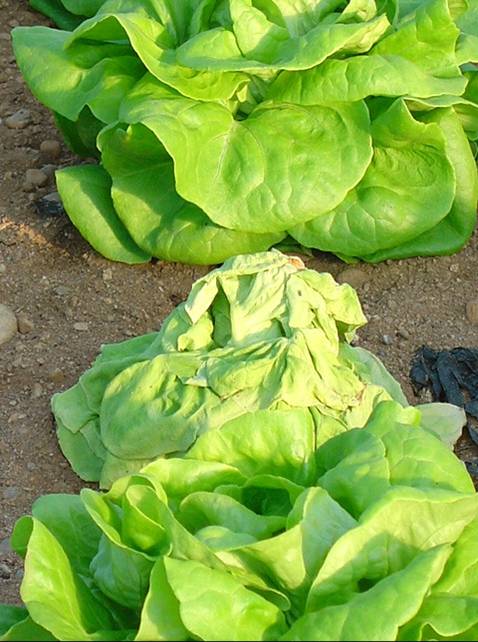
An early start to disease control in lettuce will pay dividends and is essential if growers are to satisfy the high demands of the retailer and packer. Recommended in both outdoor and indoor lettuce, the protectant fungicide Signum is seen as an excellent first choice for the control of Sclerotinia, Rhizoctonia and Botrytis as well as for the physiological and plant defence effects it gives. It has also been shown to reduce post-harvest losses adding to the high quality required, says BASF.
"The combination of boscalid and pyraclostrobin in Signum leads to top levels of disease control in lettuce and offers a broad-spectrum disease control. In trials and in commercial use this fungicide has regularly produced leading levels of disease control for Sclerotinia, Rhizoctonia and Botrytis. Signum is also active on non-label diseases such as Stemphyllium and has additional positive effects on reducing the incidence of undesirable post-harvest symptoms such as Pink rib, discoloration or dehydration," reports Simon Townsend, Product Stewardship Manager for BASF.
Simon points out that in trials Signum reduced Sclerotinia from 69% in the untreated to just 23% in the treated and resulted in yield increases of 75% over the untreated. "Its use also reduced Botrytis levels down to just 4% from 40% in the untreated, and increased yields by 78%. In further trials aimed at Rhizoctonia, Signum increased the percentage of marketable heads by 146%. Many salad growers have noted the excellent disease control as well as the many additional effects Signum has on quality, yield and shelf-life characteristics. In a market where quality and visual appeal is key, broad-spectrum disease control plus these additional quality criteria are important to the grower."
"Signum has been shown to have a number of proven positive effects over and above disease control. For example it inhibits ethylene production, resulting in lettuce crops that are less stressed and higher yielding. Such crops also tend to have a better tolerance of drought, which in view of the predicted hot summer, will be a good advantage this year. It also appears to have an effect on nitrate reductase production, which leads to more efficient use of nitrogen and higher yields," reports Simon.
He comments that growers have commented that Signum treated salad crops looked greener and healthier. In addition, "Independent research work has demonstrated Signum’s ability to stimulate the plants’ own defence mechanisms, leading to healthier crops and increased marketable yields. This research shows a speeding up of the production of proteins that are known to have plant defence activity in the plants themselves."
"The combination of these physiological and plant defence effects plus the effective long-lasting disease control and positive effects on post-harvest problems from Signum all add together to result in healthier and firmer lettuces with a longer shelf life, essential for the demanding retail sector. The early use of Signum in a programme will help in the production of high quality salad crops with good visual appeal that means good sales and returns for growers," concludes Simon Townsend.
Applied from the 1st of April onwards, the first Signum spray should be applied to lettuce as a protectant application as soon as the young plants have recovered after transplanting, usually 1-2 weeks after planting, at a dose rate of 1.5 kg/ha in water volumes of 200 to 900 litres. Two applications can be made to the crop. For Sclerotinia control, it is particularly important to apply before infection has taken place. As infection in lettuce takes place on petioles and older leaves in contact with the soil, it is better to make the first application of Signum before the outer leaves touch the soil and as early as possible in the spray programme.
